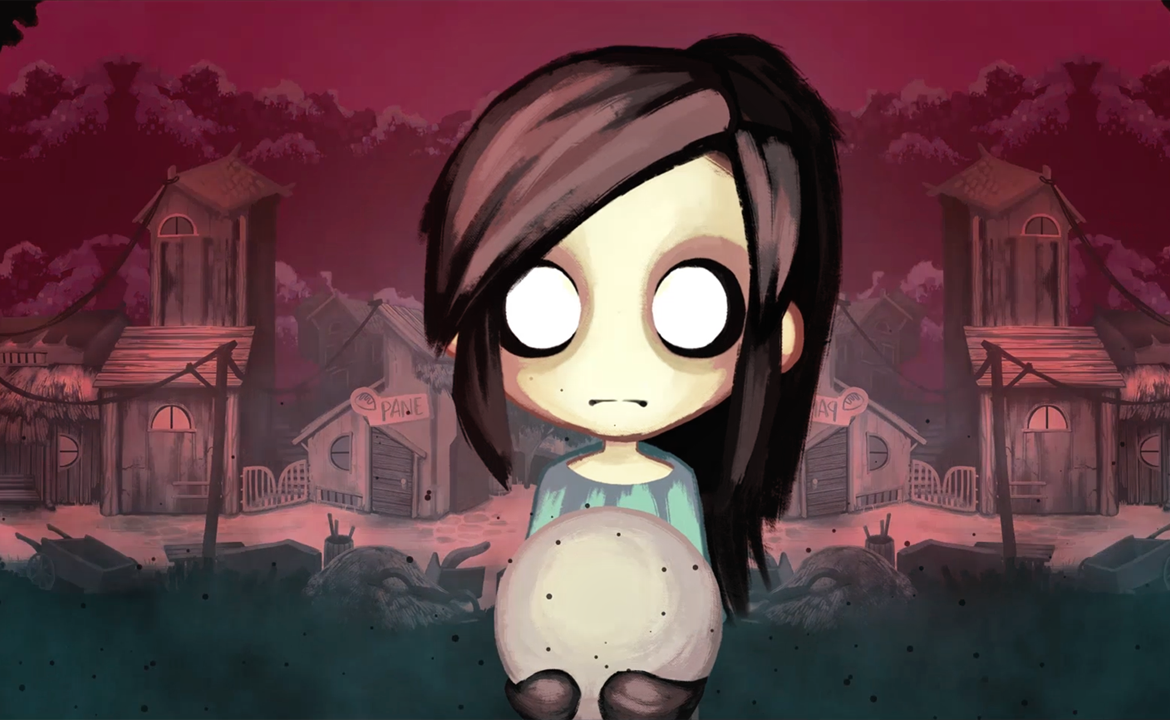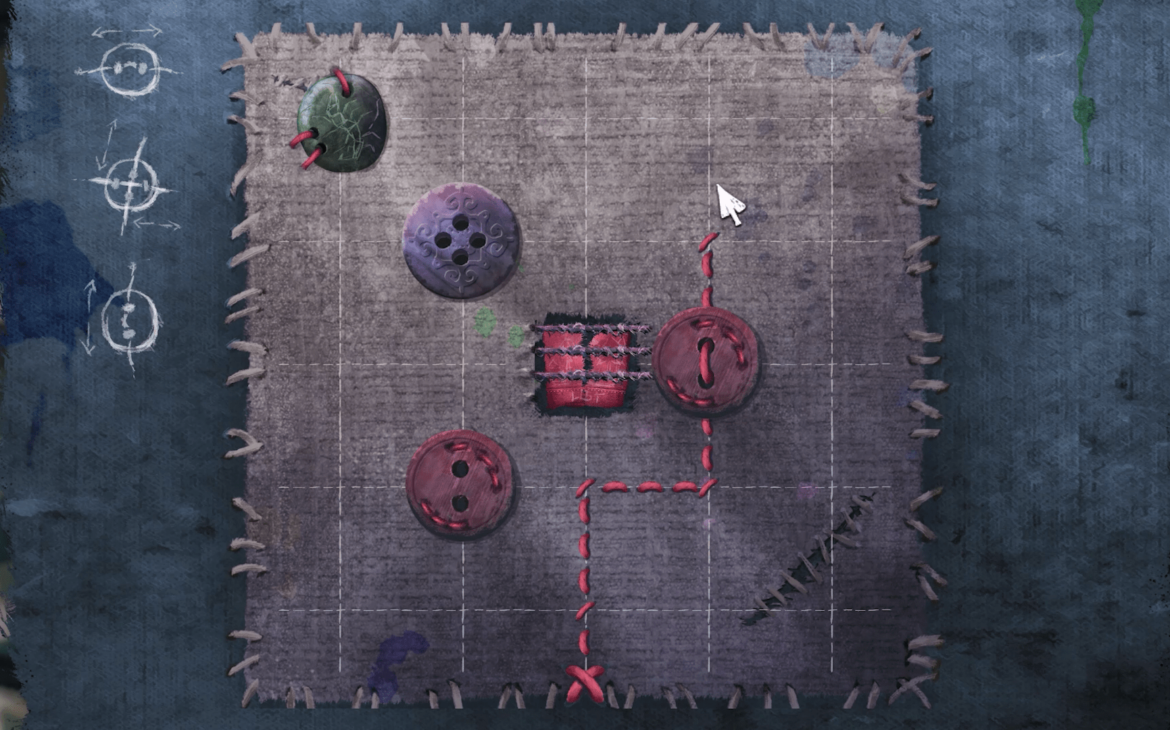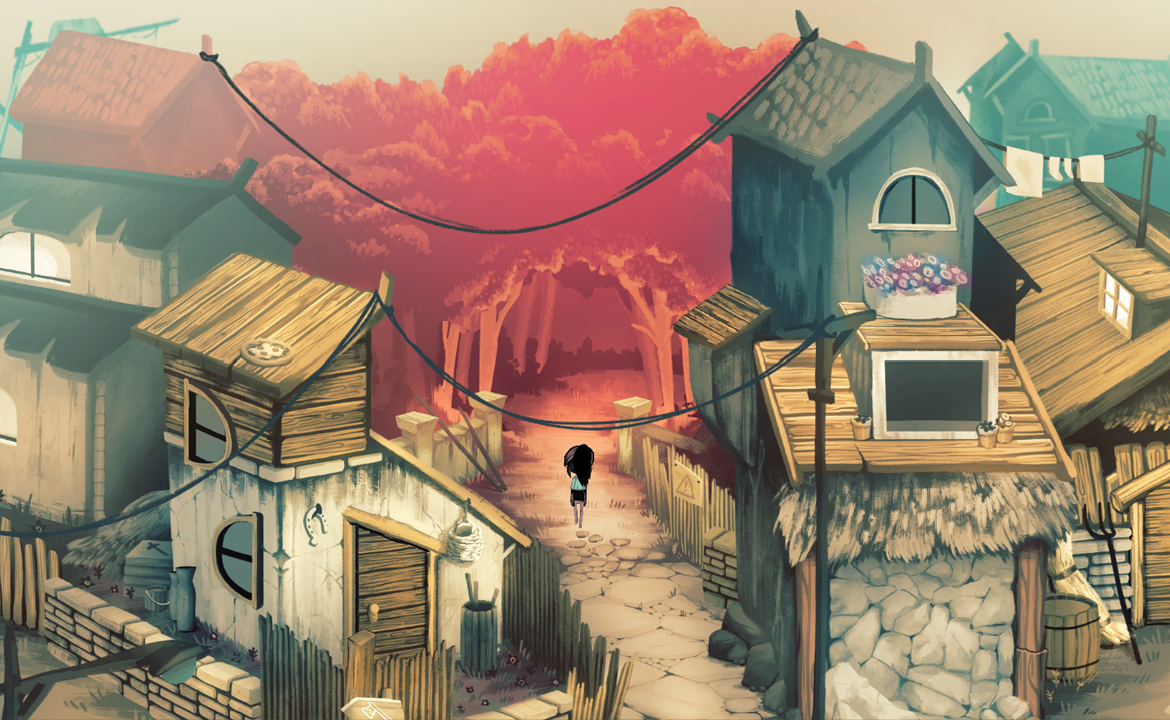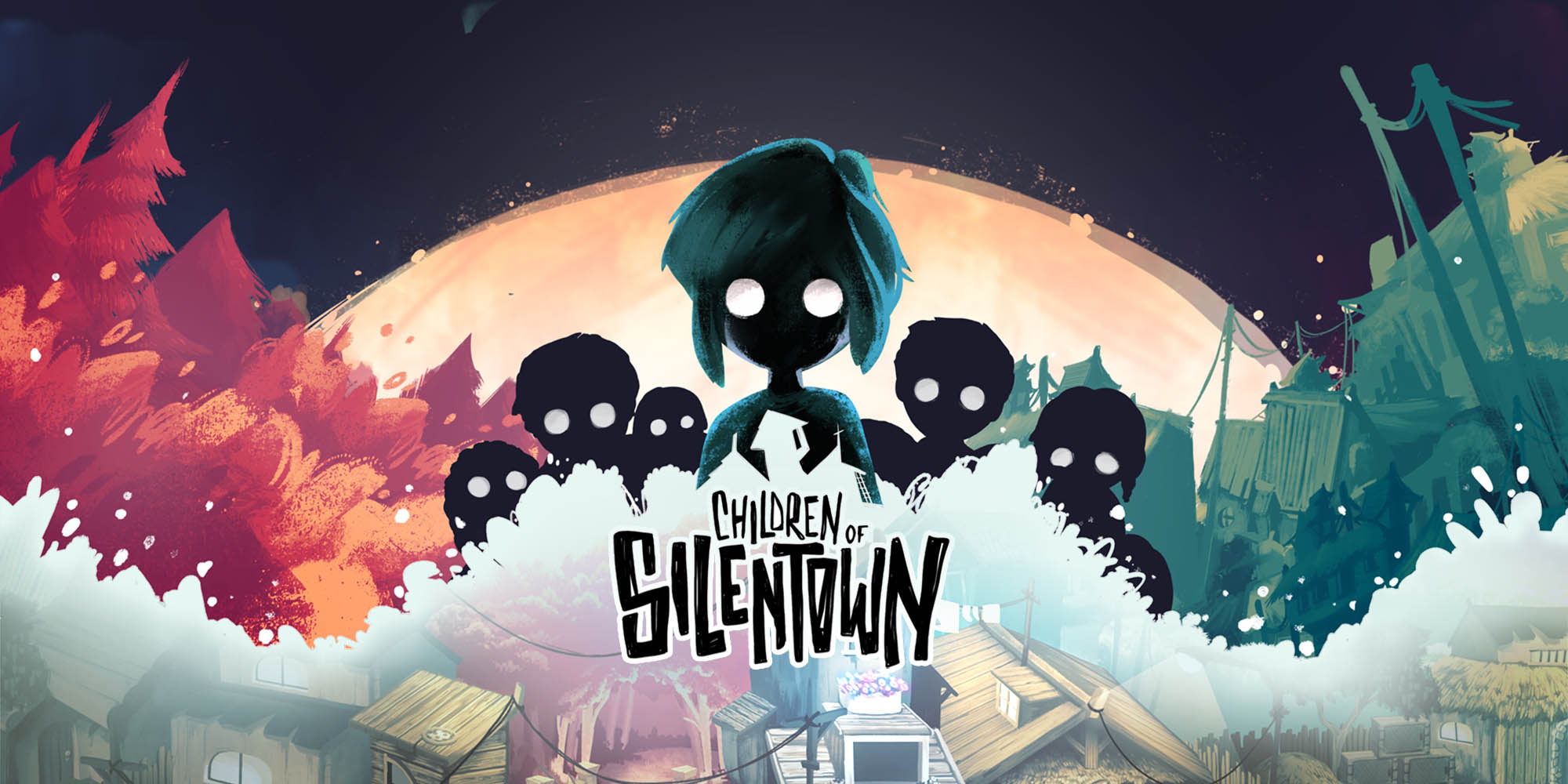Children of Silentown tells the tale of a young girl called Lucy who lives in a small town, with a scary secret. Lucy is 12 years old and loves nothing more than to explore the outside, play with her friends and sit with her mischievous cat Squinty.
Unfortunately for Lucy, there are rules not only for twelve-year-old children to follow, but rules all village folk need to abide by. Shouting is forbidden, being out in the dark is forbidden, and poking your nose into places where it doesn’t belong is also forbidden. The town is haunted by a terrible secret. People have gone missing for decades after breaking these rules, never to return.
The forest at night becomes a sinister place, one full of monsters that take people away. They choose their prey but villagers are unsure on why or how. All they know is that they need to stick together and follow the rules they think will keep them alive, to try and plicate the monsters.
Like most of the time when you are a child, adults won’t reveal the true nature of the forest or any details of the monsters. They try to protect the children of Silentown. Trying to keep their innocence for as long as possible whilst protecting them from being taken. Lucy hears the roars of the forest and sounds that nobody else appears to hear. She begins to become overwhelmed with nightmares of the forest. Images of her being lost, and shadows of the monster. Lucy is an inquisitive and curious child who wants to understand why these things have happened, why people do not go after the ones who have disappeared and why they get taken. This becomes all too close to home when Lucy’s mum is one of the victims of the forest.
Melancholy

Children of Silentown is a point and click adventure game spanning over 5 chapters that follow Lucy’s journey into investigating the true goings on of the forest and a need to satiate her curiosity.
I would be remiss not to immediately mention the art style. I could play over a hundred games in this design and not get bored. Children of Silentown is beautifully hand-drawn emanating a cute yet Tim-Burton-esque feel. There is such creativity further on in the game too. The forest was not your typical palette greens, and instead used a much more vast range of colours. With pops of colour to bold outlines, and fantastic contoured shading, I never got bored of looking at this game.
Lucy will have a prominent goal within each chapter to focus on, beyond the main tale of the story. Whether it’s to play Hide and Seek with her friends, find her missing cat, or do some investigating around the village.
This is where the point-and-click element comes to life. Items that can be kept are shown by a hand icon and Lucy is able to combine items if necessary for the right tools. At first, this is relatively straightforward, but this does become more challenging as the chapters continue. You can make rope swings, hooks, and one particular puzzle that consumed a lot of my time was wrapping a cloth around a cork. The game will not be so kind as to hint that this may need to happen. Sometimes leading you to a complete loss, haplessly pushing items together to see if they make some sort of contraption.
Lucy also has a special skill, and that is she loves to sing. You must collect notes to allow Lucy to learn songs, and learning them will give Lucy special abilities to sing. When Lucy sings, she can unlock people’s memories, giving her an insight into their personality or backstory. This evokes different emotions and scenes that play out for the characters. Before the memories are unlocked, there’s a mini-game to play. You’ll have to tie together the memory that the character may be trying to conceal or forget. These are small puzzle mini-games and with each song that Lucy learns unlocks a new type of minigame.
Threading the Needle

The first mini-game will span over a few chapters before another is discovered, and they’re relatively easy to complete. You are given a grid with clothing buttons on. You must thread the cotton through the buttons to reach the end in order to untangle the middle, like a map. There’s always one route you can take, enforcing you to choose the right direction to sew the buttons in order to reach the middle. You can’t overlap your string, making it quite fun. And for anyone who has ever played the Trivia game in Jackbox Games it is absolutely reminiscent of that, art-wise.
I cannot begin to tell you how much I quite hated the second puzzle. This was again in a grid style, and the puzzle worked by placing cogs on a pathway. You could turn a dial to turn the path sections for the cogs. Like many similar games that have used pipes, except this had an extra layer of depth to it. The cogs would only turn if attached to the appropriate block that could move. Sometimes the rhythm felt illogical and I even would work it out without really understanding how. There were many times where I brought in other Finger Guns reviewer Miles to validate how ridiculous this mini-game was, and when he couldn’t work it out either, I gave up for a few hours. This truly might as well have been a mini-game about vampires because it sucked all the enjoyment I was having with any moment of the game to that point.
This brings me to the point of accessibility. Children of Silentown is not the most accessible game at present. There is no option to skip menial mini-games, and these are sometimes fundamental for you to be able to move on and progress the chapter. Getting stuck without a way to skip or even have a hint can soft-lock your progress and if you’re either someone who’s impatient like me, or someone whose brain just doesn’t work like that. There is a complete absence of accessible features in the menu which is a real shame. It is such a waste to have such a wonderful indie game and interesting story be locked behind an illogical nonsensical mini-game. This is also true for the point-and-click element. There was a point where I had a few days break without playing, and on returning I had no idea where I was in the chapter, what my aim was, why I had cookies in my inventory, what the hammer in my inventory was for and what needed to happen next. After that, I kind of vowed to power through it just so I didn’t have to go through the mind-meld of figuring out what my current situation was.
The Sound of the Forest

Whilst some songs are integral to the story, there is a song that is missable and along the way you can also collect stickers that can be missable. The reason I mention this is because Children of Silentown has four possible endings. The story throughout is compelling and engaging and I initially got an ending which I felt was almost too abrupt. It didn’t quite explain why everything had happened. There is a wicked twist to come, and although I still have some questions now, the meaning behind some of the other endings are very emotive and encapsulates a meaning that can be interpreted how the player wishes.
I ran into no technical issues with this game. Depending on your style of play the game can range anywhere between 7 and 12 hours. I had a lot of fun playing Children of Silentown, it manages to touch upon notes of emotion that typically you wouldn’t see in such a haunting yet friendly-looking game. Despite the lack of accessibility options, quick-to-end story wrap-up, and the world’s most infuriating mini-game, Children of Silentown has thought-provoking storytelling, charming character building and writing, with a beautiful art style. I think for the price point of around £15, it would be worth your time. I can see this also working well across consoles too.
Children of Silentown has a thought-provoking story, with an art style that is impossible not to enjoy. A point and click adventure spanning over five chapters to enjoy – if you can get past the infuriating mini games – there’s much to be fond of. Unfortunately, the story ends abruptly, but your journey up till then will be full of mystery and intrigue.

Children of Silentown is out now on PC via Steam (review platform), PlayStation 5, Nintendo Switch and Xbox Series X|S
Developers: Elf Games Works, Luna2 Studio
Publishers: Daedalic Entertainment GmBH
Disclaimer: In order to complete this review, we were provided with a promotional code from the publisher. For our full review policy, please go here.
If you enjoyed this article or any more of our content, please consider our Patreon.
Make sure to follow Finger Guns on our social channels. Twitter, Facebook, Twitch, Spotify or Apple Podcasts – to keep up to date on our news, reviews and features
